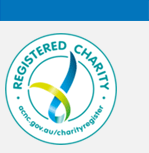Author Credentials
Vicky Warwick DrN, MoN, RN
Abstract
Objective
To systematically measure and describe perioperative nurses’ surgical count practices using the Surgical Count Observational Tool, to measure conformity with standardised processes and identify barriers and enablers influencing nurses’ practices.
Sample and setting
A large public tertiary hospital in Western Australia.
Methods
The Surgical Count Observational Tool (SCOT) was developed using the Content Validity Index over two Delphi panel rounds and then pilot tested. Individual observations were analysed according to 14 criteria based on the 2016 Australian College of Perioperative Nurses (ACORN) standard ‘Management of accountable items used during surgery and procedures’1. Count processes were observed over two consecutive weeks across six specialist perioperative teams including nurses, surgeons, anaesthetists and technicians to measure compliance with the ACORN standard. The SCOT and a field diary were then used in an observational study of 83 nursing staff, including 54 circulating nurses and 29 instrument nurses, over a period of 57 hours. Interrater reliability was calculated using Cohen’s kappa. Descriptive statistics were used to analyse observational data.
Results
Of the 1268 count practices observed, 759 were compliant with the ACORN standard, representing a 60 per cent compliance rate.
Conclusion
Consistency and compliance rates were lower than expected. Patient, case, environmental factors and expectations of surgeons and co-workers were observed to act as barriers to best practice in perioperative nurses undertaking a surgical count, while nurse’s knowledge was observed to act as an enabler.
Recommended Citation
Warwick, Victoria Ruth; Gillespie, Brigid M.; McMurray, Anne; and Clark-Burg, Karen G.
(2021)
"Undertaking the surgical count: An observational study,"
Journal of Perioperative Nursing: Vol. 34
:
Iss.
3
, Article 1.
Available at: https://doi.org/10.26550/2209-1092.1089
Creative Commons License

This work is licensed under a Creative Commons Attribution 4.0 License.
Included in
Health Services Administration Commons, Health Services Research Commons, Perioperative, Operating Room and Surgical Nursing Commons, Surgery Commons


